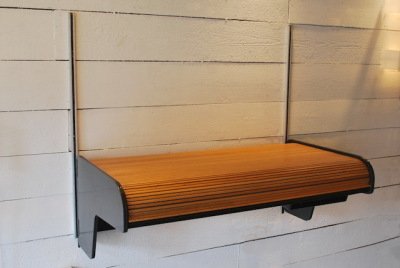Georges Nelson
George Nelson stands as one of the most influential figures in 20th-century American design. Born in 1908 in Hartford, Connecticut, he studied architecture at Yale University, where he developed an early conviction that design must respond to real needs, improve daily life, and integrate seamlessly into its environment.
In 1935, Nelson joined Architectural Forum magazine, eventually becoming associate editor. This period proved formative: it broadened his architectural culture, exposed him to the European vanguards, and led him to meet key modernist figures such as Le Corbusier, Mies van der Rohe, and Walter Gropius. His seminal 1945 article Storagewall, which proposed an integrated modular storage system, caught the attention of furniture manufacturer Herman Miller.
In 1945, Nelson was appointed Design Director of Herman Miller, a position he would hold for more than two decades. Under his leadership, the company became a cornerstone of American modernism. Nelson gathered around him an extraordinary constellation of talents — Charles and Ray Eames, Isamu Noguchi, Alexander Girard, Don Chadwick — transforming Herman Miller into a true laboratory of innovation.
At the same time, Nelson founded his own studio, George Nelson & Associates, which produced numerous iconic pieces: the Bubble Lamps (1952), the Nelson Bench, the Coconut Chair, the Marshmallow Sofa, and his celebrated series of wall clocks produced by Howard Miller. These objects are marked by structural clarity, playful intelligence, and a resolutely functional, often forward-looking approach.
A major theorist, Nelson also authored several influential texts, including Tomorrow’s House (1945) and Problems of Design (1957), advocating a vision of design capable of responding to a rapidly changing society. His work — blending analysis, pedagogy, and experimentation — helped shape the language of American modernism.
George Nelson passed away in 1986, leaving an enduring legacy: an inventive and coherent body of work that remains central to our understanding of modern design today.

